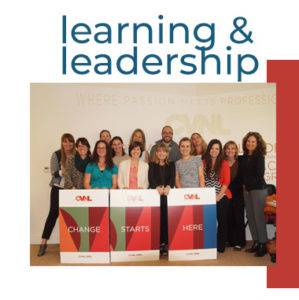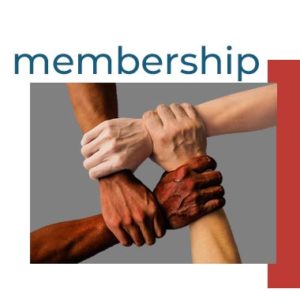Shift Your Mindset for Effective & Fearless Fundraising
As Giving Season approaches and we are making our best efforts to raise the attention that our good work deserves, CVNL’s friend and affiliate consultant Mallory Erickson has shared with us some thoughts on how to be more effective at fundraising in the interview below.
Mallory will be at CVNL for a 5 hour boot camp on Fearless Fundraising on November 13. Read more about the boot camp and join HERE!
CP: First of all what is Energy Fundraising?
ME: The idea behind Energy Fundraising is to address fears and vulnerabilities that hit many of us when it comes to asking for money. There is a common belief that you are either a “natural” fundraiser or you are not. I believe that fundraising is a skill that can be taught and learned, and that confidence can be built through self-awareness.
The heart of fundraising has less to do with what you do to raise money, and much more with how. Like energy attracts like energy. Energy Fundraising can fundamentally change how you “show up”, and help you build the self-trust and confidence that will engage people in a transformative way and inspire them to give powerfully
CP: Speaking of fears, why do you think many of us are so afraid of asking for money?
ME: Money in general is an uncomfortable topic. Think about the discomfort that comes from paying the bill at the end of a dinner out with friends, there is this common scenario of someone wanting to split the bill even, and others having different ideas. And there is this odd moment when we all think we are doing the wrong thing.
Vulnerability and discomfort around money come in all shapes and forms. Fundraising is no different. In my experience one of the main elements that challenge executive directors in fundraising, particularly of small nonprofits, is linked to a sense of embarrassment for the idea of asking money for their own salary, ultimately for themselves. Of course we all know that without their leadership and the work they do the organization wouldn’t exist, there would be no benefit to the communities they serve. For some reason it feels very personal.
You see how being trained in assessing our mindset and adjust it to shift to a mentality of worth is critical, along with the understanding of “being there for a higher purpose”.
CP: In your approach, personal energy and fundraising go hand-in-hand. In the rush of “getting things done” some of us may think “I don’t have the time to think about my energy right now”… It is a paradox I know. Why is it so critical to stop and think about our energy?
ME: In the nonprofit world our time is so precious, we always try to do way too much with way too little. Efficiency is key. Understanding and mastering our energy levels helps us show up in our best shape, at our highest level of energy, and maximize the time we have with a donor to get the best results.
Taking one or two minutes before stepping into a meeting, to check in with ourselves and assess where we are energetically, makes a big difference. The time investment of this approach is really small. For me for instance, it’s a small ritual of self-assessment and preparation on my commute to a meeting. I ask myself the following questions:
- How do I want to show up at this meeting
- What is my energy level right now
- Is something bothering me that I should get rid of to clear my thoughts
The focus and efficiency that derive from this simple practice are inestimable.
CP: Can you share your biggest fundraising mistake and what you learned from it?
ME: I tend not to think about events and things that happen as mistakes. It is so hard in the fundraising world to control the outcomes of our actions.
Thinking about the mistakes we think we did is one of the reasons behind the fear of fundraising. There is no value in dragging ourselves into a spiral of “what we should have done instead”. The important thing is what we do with what we learn from an “unsuccessful experience”.
A couple years ago I met with a new donor who was really excited for what we were doing, she was giving me all the signals that she was ready to give. When I asked her the number that I had worked out, the response was “We cannot do all that right now”. I ended the conversation thinking I had enough to refine my request. I went back and prepared a proposal for my donor for a 3-year plan for that same amount I had asked. That donor was completely thrown off by my proposal, and finally shared that the number she wanted to give was much smaller.
How the perception of the situation could be so different for the two of us? How did my donor and I end up on such different ground? I did uncover my “mistake”. I was so proud of myself for getting that big number out of my mouth, that instead of getting specific and explore what the real number was for my donor, I thought I had “enough” and I could take it from there. My fear that the number would become smaller just by talking further, got in the way of mutual understanding and efficiency.
CP: Do you have a good story about a NO you received that later became a YES?
ME: Yes, lots of them! There are many reasons why people say no, sometimes it’s because they don’t fully understand what we do, other times because they are spread thin, or because they have other giving priorities at that moment. There are two important lessons linked to receiving a no that can be transformative: 1) none of those reasons are personal and have to do with us as people; and 2) understanding the real reasons behind a no gives us new powerful tools to connect later.
A few years back I tried to engage with one potential donor to give for an environmental cause I was working on. There was an immediate no, with no apparent opening for the future and basically a “best of luck” at the end of the conversation. I didn’t immediately formulate the thought of cultivating that relationship for later, but I kept a positive attitude and decided to learn more about that person’s interests. I learned about some great projects she was contributing to and I honestly admired her commitment. That shifted my energy completely. After a few occasional conversations for about 18 months, she brought up the possibility of giving to my organization and she became eventually one of our major donors.
The big take-away here is that sometimes a NO is a great opening for an organic and long-lasting relationship. Once the pressure of the ask is lifted, there is more space for authentic connection and cultivation. Maybe that person will never be a donor to us but they will always contribute to our cause one way or another, with advice, with an introduction, or showing up to an event or buying a table.
CP: What would you say to our readers who may be unfamiliar with energy fundraising about the benefits of this boot camp?
ME: The biggest reason to come to this boot camp is to learn a completely different way to approach fundraising. It is not about adding work to your plate, it is about shifting perspective and acquiring tools for emotional intelligence, dynamic communication, influencing conversations, and prompt decision making to increase your results and effectiveness.
Often times people leave fundraising workshops with a sense of dissatisfaction thinking “I know what I need to do, I just don’t have time to do it all”. I don’t have the power to create more time in people’s schedule, but my method will definitely provide strategies to use the time you have more efficiently by mastering what you should do and how.
Energy Fundraising will help attendees to powerfully overcome any negative attitude toward themselves and relieve their anxiety around fundraising, to learn how to show up from a place of excitement, and trust in our ability to connect.








